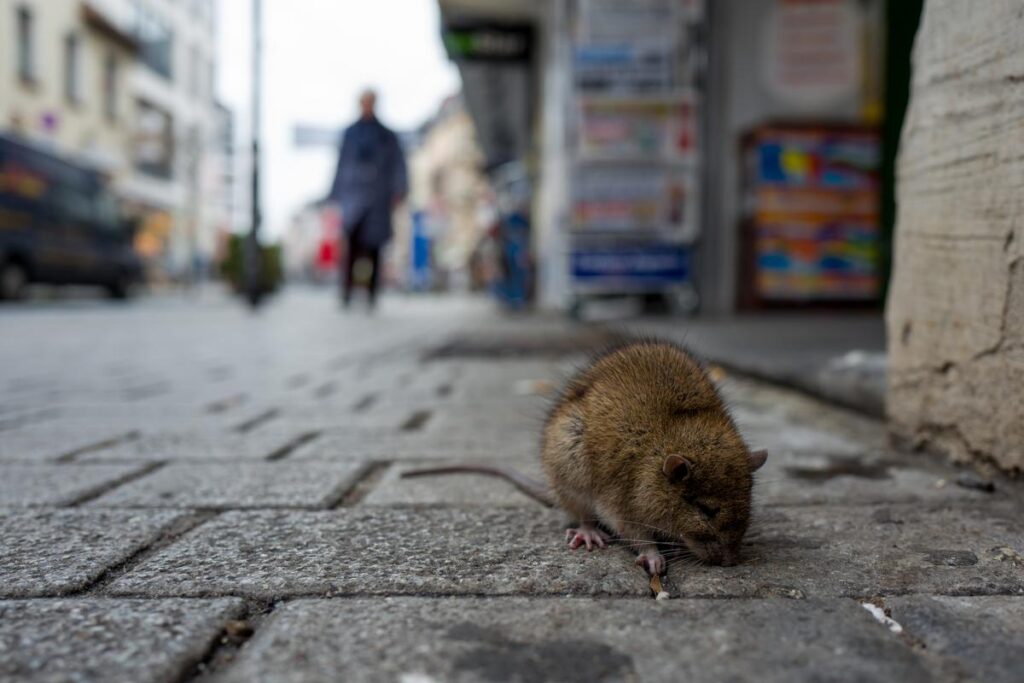Rodents have always been part of New York City’s ecosystem—but in recent years, sightings have spiked. Between ongoing construction, aging infrastructure, and food availability, rats and mice are more visible and brazen than ever. If you live or work in NYC, you’ve likely seen one scurrying through the subway or rummaging through trash. But the real trouble starts when they make their way indoors.
Here’s how rodents are getting into NYC buildings—and, more importantly, how you can keep them out.
Why Rodents Love NYC
Rodents thrive in urban environments, and New York City provides everything they need:
- Abundant food sources: Trash, littered food, and overflowing dumpsters are everywhere.
- Endless shelter: Basements, crawlspaces, walls, and subway tunnels offer protection and warmth.
- Rapid reproduction: A single female rat can have up to 6 litters a year, with as many as 12 pups per litter.
Once they establish a nesting area inside a building, they’re incredibly difficult to remove without professional help.
Common Entry Points
Rodents can squeeze through incredibly small openings—mice need just 1/4 of an inch, and rats about 1/2 inch. In a city full of aging brick, warped doors, and crumbling foundations, these are the most common access points:
1. Gaps Around Pipes and Utility Lines
Rodents often enter buildings through small gaps around plumbing, gas, or electrical conduits. These are common in kitchens, basements, and boiler rooms.
2. Cracks in Foundations or Walls
Years of wear and tear can create small cracks in building exteriors. Even hairline openings are enough for mice to squeeze through.
3. Broken Vents or Window Screens
Poorly maintained ventilation systems or torn screens provide easy access to the interior of a building, especially in basements or near the roofline.
4. Open Doors and Loading Areas
Propped-open doors in apartment buildings or commercial loading docks are an open invitation—especially in the evening when rodents are most active.
5. Sewer and Drain Systems
NYC’s underground sewer system is a major rat superhighway. Damaged or uncapped drain lines can let them enter directly from below.
Warning Signs of an Infestation
Rodents are nocturnal and excellent at hiding. But if they’ve moved into your space, there will be clues:
- Droppings: Small, dark pellets near food, in drawers, or along baseboards.
- Gnaw marks: Rodents chew constantly—on wires, wood, plastic, and even furniture.
- Grease trails: Rats often leave oily smudges from their fur along walls or runways.
- Scratching noises: Often heard in walls, ceilings, or under floors—especially at night.
- Pet behavior: Dogs and cats may bark, scratch, or stare at walls if they sense rodent activity.
If you notice one or more of these signs, it’s important to act fast. Rodents can cause significant property damage, contaminate food, and spread disease.
How to Keep Rodents Out
Preventing rodents from entering your building is far easier than dealing with an infestation. Here are some effective steps to take:
1. Seal Entry Points
Inspect the perimeter of your building—both inside and out. Use steel wool, caulk, or metal mesh to seal gaps around pipes, vents, and doors.
2. Manage Garbage Properly
Store trash in heavy-duty, sealed containers. Avoid leaving garbage bags on the sidewalk overnight, and schedule regular pickups when possible.
3. Eliminate Clutter
Rodents love cluttered areas where they can nest undisturbed. Keep storage spaces organized and avoid leaving piles of paper, cardboard, or fabric on the floor.
4. Fix Water Leaks
Rodents need water to survive. Repair dripping faucets, leaking pipes, and any areas with standing water (like trays under refrigerators or AC units).
5. Store Food Securely
Keep all food—human and pet—in airtight, rodent-proof containers. Clean up crumbs, spills, and pet bowls regularly.
When to Call the Pros
If you’ve taken preventive steps and still see signs of rodents, it’s time to call a pest control professional. Experts can:
- Conduct a thorough inspection to find entry points.
- Install traps or bait stations in safe, effective locations.
- Recommend long-term exclusion methods.
- Provide regular monitoring and maintenance, especially for multi-unit buildings.
In New York, rodents aren’t just a nuisance—they’re a public health issue. Professional pest control helps not just individual tenants, but the entire building stay rodent-free.
Final Thoughts
Rodents are part of life in the city—but that doesn’t mean they have to be part of your home or business. By understanding how they get in and taking proactive steps, you can drastically reduce the risk of an infestation.
Vigilance is key. Stay alert, seal your space, and act quickly at the first sign of trouble. Because in a city as fast-moving as New York, rodents never wait around. We recommend Pest control in new york.


Comments are closed.